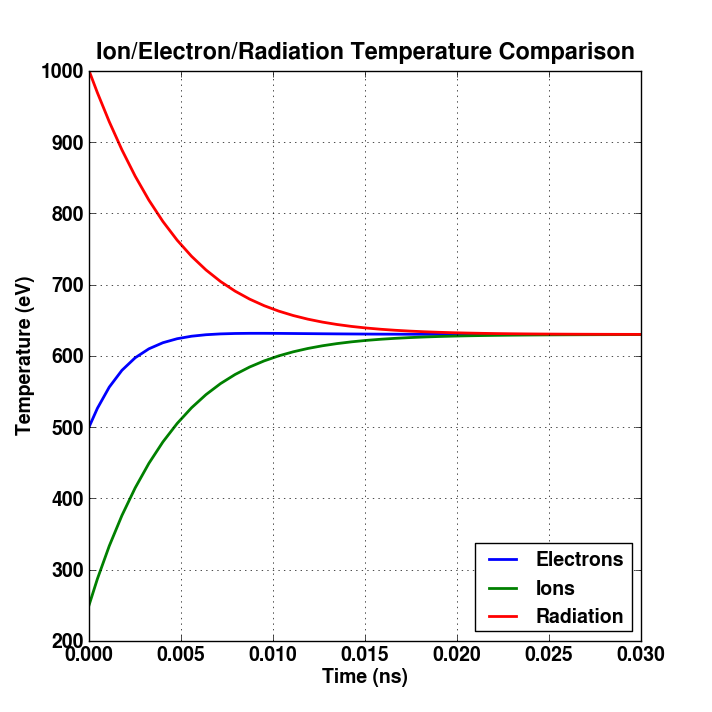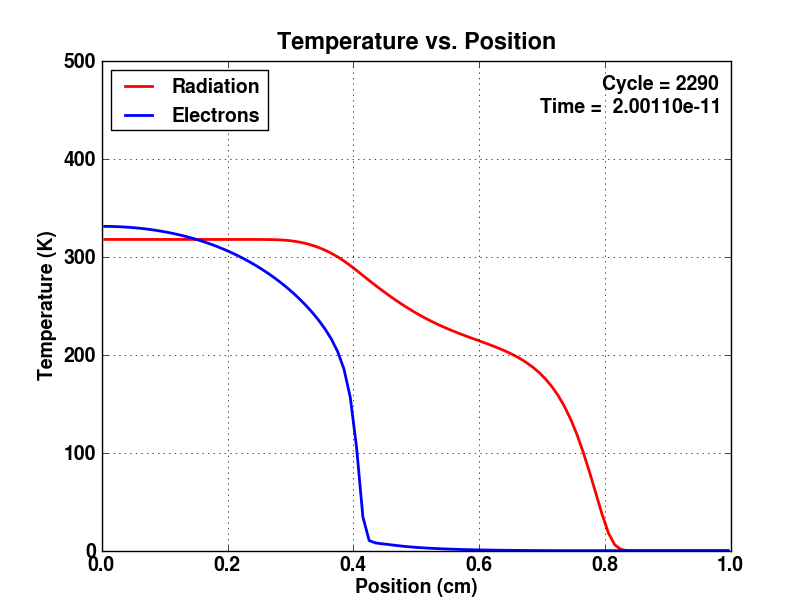Next: 35.7 Other Test Problems Up: 35. The Supplied Test Previous: 35.5 Burn Test Problem Contents Index
There are currently two simulations included in FLASH which involve the RadTrans unit with multigroup diffusion. These simulations are not comparisons to analytic solutions - instead they are simple tests designed to demonstrate the correct usage of the multigroup diffusion capability in FLASH.
The simulation directory for this test is MGDInfinite. This is a fairly simple simulation which has no spatial gradients. Separate ion/electron/radiation temperatures are set throughout the domain initially. Over time, the temperatures should approach one another. The electrons and the radiation field exchange energy through emission and absorption, and the HeatExchange unit controls the rate at which the electrons and ions equilibrate with one another. The radiation field is represented using four radiation energy groups.
A sample setup line is:
./setup -auto MGDInfinite -1d +hdf5typeio +mtmmmt +mgd +uhd3t -with-unit=physics/materialProperties/Opacity/OpacityMain/Constant species=be,poli,xe mgd_meshgroups=4
Figure 35.72 shows the temperatures as a function of time.
 |
The simulation directory for this test is MGDStep. This simulation involves four group radiation diffusion and electron conduction. A constant opacity is used in this simulation. The transport opacity is set to a very small value to simulate a vacuum. This is a 1D test where the initial electron and radiation temperatures are discontinuous. Flux limiters are used for both the electrons and radiation. Over time, energy flows from the hotter region to the colder region. At the same time, the radiation temperature decreases as energy is absorbed by the electrons. Figure 35.73 shows the final temperature profiles for this simulation. There is a relatively sharp drop-off for each curve caused by the use of flux limiters. The drop-off can be made sharper by increasing the number of cells used in the simulation.
 |